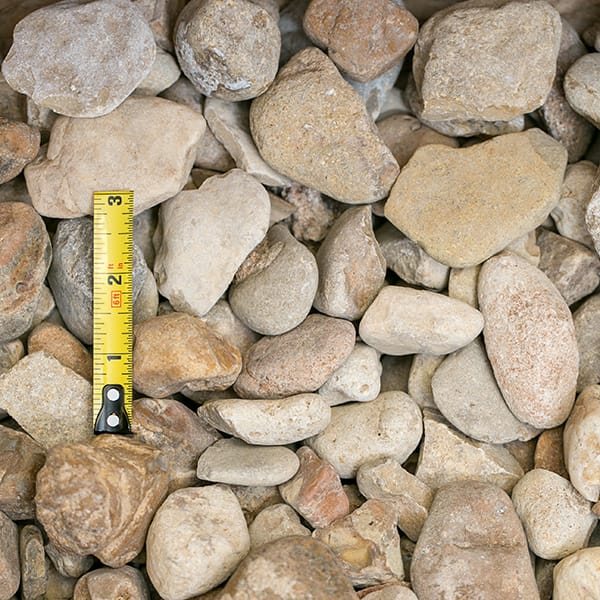Preparing Your Austin Lawn for Winter: Pro Tips
By Innovation Grounds
As the vibrant colors of fall begin to fade and the temperatures cool down in Austin, many homeowners begin to wonder what they can do to ensure their lawn stays healthy throughout the winter. Proper Austin lawn winter preparation is essential to maintaining a lush, green lawn come springtime. With the right care, your grass can endure the colder months and be primed for a strong growth season when temperatures rise again.
In this guide, we’ll walk you through the key steps to preparing your Austin lawn for winter. Whether you’re a seasoned gardener or a first-time homeowner, these tips will help you maintain a healthy and beautiful lawn all year round.
1. Start with a Clean Slate: Remove Leaves and Debris
As fall progresses, your lawn is likely to accumulate fallen leaves, twigs, and other debris. Left unchecked, this organic material can suffocate the grass, blocking sunlight and preventing proper airflow. This can lead to fungal growth and other issues when the colder months arrive.
Pro Tip: Regularly rake or mow over your lawn to collect and remove fallen leaves. If you have a compost pile, you can use the leaves to create nutrient-rich compost for your garden. A leaf blower or mulching mower can make this process easier and faster.

2. Aerate Your Lawn
One of the best things you can do for your Austin lawn in preparation for winter is to aerate it. Lawn aeration involves creating small holes in the soil to allow air, water, and nutrients to penetrate deeper into the root zone. Over time, soil can become compacted, especially in areas with heavy foot traffic or clay-heavy soils common in Austin.
Why Aerate in the Fall? Fall is the ideal time for aeration because it allows your lawn to recover before the coldest weather arrives. This will give your grass the ability to take full advantage of moisture and nutrients, improving its health as it enters dormancy.
Pro Tip: If you have a large lawn, you may want to invest in a lawn aerator or hire a professional to do the job. You can rent an aerator at most hardware stores if you prefer a DIY approach.


3. Fertilize Your Lawn
Fertilizing your lawn in the fall is an important part of Austin lawn winter preparation. As temperatures drop, grass slows its growth but continues to take in nutrients. Applying the right type of fertilizer will help strengthen your lawn’s roots, which are essential for surviving the winter months.
Best Time to Fertilize: Apply fertilizer in late October to early November, just before the first frost. This will give your grass the nutrients it needs to develop strong roots while it’s still actively growing, without encouraging top growth that could be harmed by the cold.
Pro Tip: Use a slow-release nitrogen fertilizer that provides nutrients over an extended period. Choose a fertilizer that also contains potassium to help improve your lawn’s winter hardiness.


4. Reseed Bare or Thin Patches
Winter is an ideal time to reseed areas of your lawn that are bare or thinning. In Austin, the cooler temperatures can help grass seed germinate and establish roots before the weather becomes too cold. However, timing is crucial.
Best Grass for Austin Lawns: For cool-season grass, such as ryegrass, the fall is the best time to plant. Ryegrass will thrive in cooler temperatures and create a green lawn throughout the winter months, blending in with dormant warm-season grasses like Bermuda and St. Augustine.
Pro Tip: When reseeding, ensure the soil is lightly aerated or loosened to give the new seed better contact with the soil. After sowing the seed, lightly water it to help it establish roots.


5. Water Your Lawn Appropriately
Watering is an essential part of Austin lawn winter preparation, but over-watering can be just as harmful as under-watering. During the cooler months, your lawn’s water needs will decrease, but it’s important to ensure your lawn gets enough moisture to stay hydrated and healthy.
How Much Water Does Your Lawn Need? In fall and winter, your lawn typically needs about one inch of water per week. This can come from rainfall or supplemental irrigation. Be mindful of rainfall patterns and adjust your watering schedule accordingly.
Pro Tip: Water your lawn in the morning to prevent the water from sitting on the grass overnight, which could promote fungal growth. Avoid watering in the late afternoon or evening to minimize the risk of disease.


6. Mow Your Lawn Before the First Frost
Although grass growth slows down in the winter, it’s still important to mow your lawn before the first frost. However, you’ll want to set your mower height a bit higher than usual. The goal is to leave the grass long enough to protect the roots but short enough to avoid snow mold or other fungal issues.
Ideal Mowing Height: For cool-season grasses like ryegrass, set your mower to about 2.5 to 3 inches. For warm-season grasses like Bermuda, keep the mowing height around 1.5 to 2 inches.
Pro Tip: If you’ve been letting your grass grow too long, give it a light trim a few weeks before winter arrives. This will allow the grass to recover and harden off, making it more resilient in the cold weather.


7. Apply Mulch to Flower Beds and Trees
Mulching is a great way to protect the plants around your Austin lawn. Applying a layer of mulch around trees, shrubs, and flower beds helps retain moisture, regulates soil temperature, and reduces the risk of winter damage.
Pro Tip: Use organic mulch such as shredded bark, leaves, or straw. Avoid piling mulch against the base of trees or plant stems, as this can lead to rot. Instead, spread it in a layer around the base, keeping the mulch a few inches away from the plants.


8. Prepare Your Lawn Equipment for Winter
As you wrap up your lawn care for the season, it’s also a good idea to take care of your lawn equipment. Clean and maintain your mower, aerator, trimmer, and other tools to ensure they’re ready for next spring. Proper maintenance can extend the life of your equipment and help you start the season off on the right foot.
Pro Tip: Change the oil in your lawn mower, sharpen the blades, and empty the fuel tank before storing it for the winter. This will keep your equipment in top condition and ready for action when the growing season begins again.


9. Monitor for Pests and Diseases
Even in winter, your Austin lawn can be vulnerable to pests and diseases. It’s essential to keep an eye on your lawn during the winter months. Be on the lookout for signs of insect damage, fungal infections, or diseases that can spread over the cooler season.
Pro Tip: If you notice any issues, consider applying a preventative fungicide or pesticide. Consulting a local lawn care expert can also help you identify and address any problems before they become too severe.


Conclusion: Set Your Lawn Up for Success in Spring
By following these pro tips for Austin lawn winter preparation, you’ll be well on your way to maintaining a healthy and thriving lawn come springtime. The key to a vibrant, green lawn throughout the year is proper care during the off-season, and winter is no exception.
Remember, your Austin lawn is a long-term investment, and taking the time to care for it in the fall and winter will pay off with lush, vibrant grass in the warmer months. By aerating, fertilizing, reseeding, and keeping your lawn clean, you’ll ensure that your grass stays healthy and ready for the next growing season.
Pro Tip: If you’re unsure about any of these steps or need assistance, consider hiring a professional lawn care service to handle your Austin lawn winter preparation. With their expertise, your lawn will be in the best hands.




